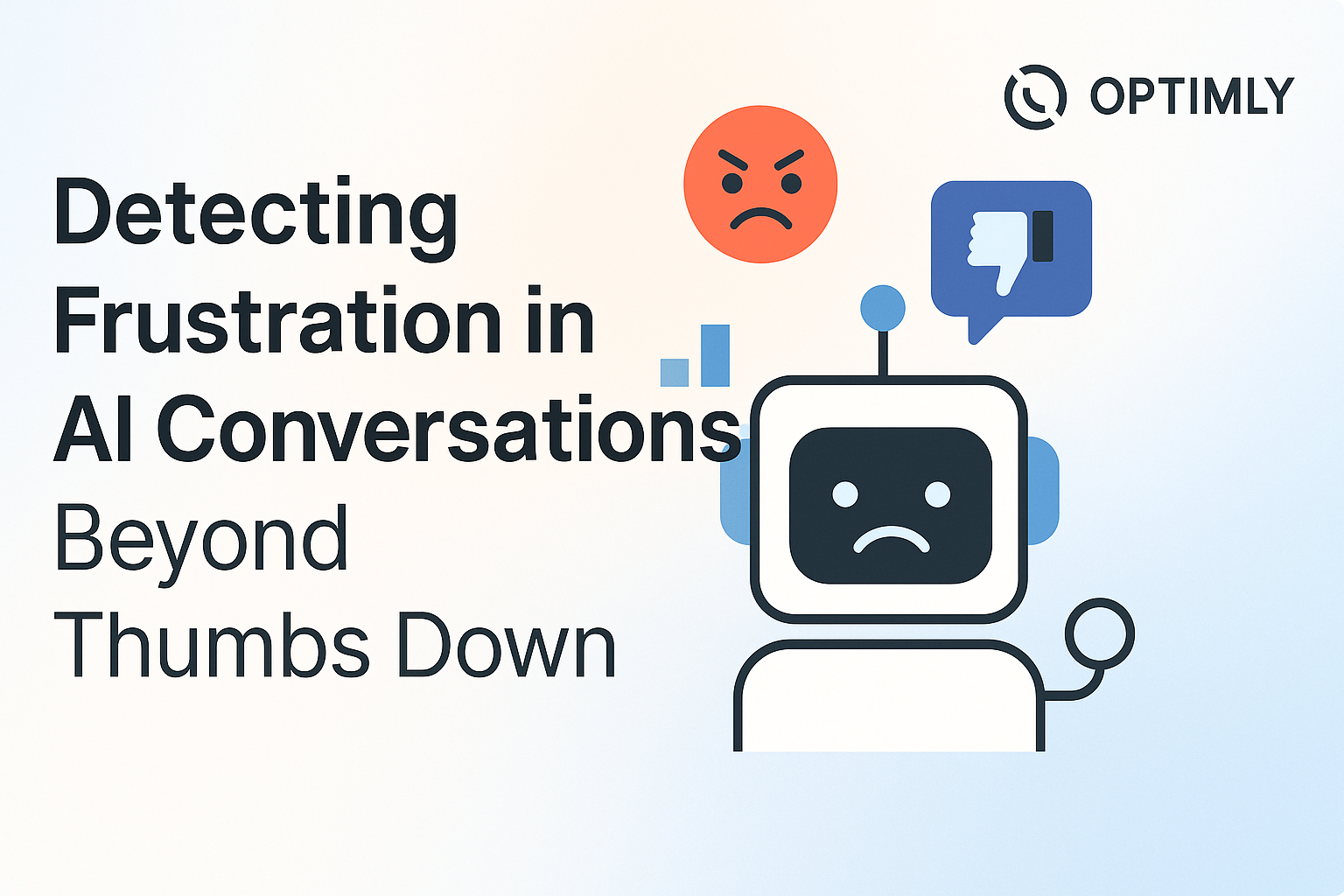Detecting Frustration in AI Conversations -- Beyond Thumbs Down

Detecting frustration in AI conversations is essential to ensure your LLM agents deliver value and maintain user satisfaction. Frustration often manifests subtly—through repeated queries, abrupt session terminations, negative sentiment, or channel-switching—and traditional analytics miss these cues. Cutting-edge methods combine sentiment analysis, emotion recognition, behavioral signals, and dialogue breakdown detection to surface frustration in real time. Implementing a modular detection pipeline that tracks tone, retry patterns, abandonment, and feedback enables proactive handovers to human agents and continuous prompt optimization. Below, we explore the state of the art, practical techniques, and how Optimly integrates these capabilities into a unified observability layer.
Why Detect Frustration?
Users abandon chatbots when they feel misunderstood or stuck. High frustration rates correlate with lower retention and negative brand perception. Early detection allows:
- Automated Escalation: Hand off to a human agent before dissatisfaction peaks.
- Prompt Refinement: Identify prompts that trigger confusion.
- Content Optimization: Adjust knowledge sources when RAG answers fail.
Neglecting frustration leads to missed revenue and degraded user experience.
What Is Frustration in Conversations?
Frustration is an emotional state arising from unmet expectations or obstacles in dialogue. It can be detected by:
- Linguistic Cues: Negative sentiment, angry keywords, or abusive language.
- Behavioral Signals: Query retries, session abandonment, channel switching.
- Prosodic Features (voice interfaces): Elevated pitch, faster speech rate.
- Contextual Patterns: Sudden topic shifts, repeated clarifications.
Methods for Detecting Frustration
1. Sentiment Analysis
Classify each utterance as positive, neutral, or negative. Transformer models like RoBERTa achieve high accuracy on benchmark datasets. However, pure polarity misses nuance—“I can’t believe this” might be neutral lexically but frustrated contextually.
2. Emotion Recognition in Conversation (ERC)
ERC assigns fine-grained labels (anger, sadness, frustration) by modeling dialogue context and speaker state. Recent deep-learning methods reach human-level performance on curated datasets.
3. Keyword-Based Detection
Simple lexicon matching for frustration-related words (e.g., “stupid”, “useless”) provides a quick baseline. In production, this approach can trigger escalations with solid precision.
4. Dialogue Breakdown Detection
Monitor for user rephrases, clarifications, or requests to “speak to a human.” High rephrase rates (e.g., > 2 retries) signal breakdowns.
5. Session Abandonment
Track sessions that end immediately after a model reply; abandonment rate correlates strongly with frustration.
6. Multi-Modal Signals
Combine text, voice pitch, and typing speed for richer detection in voice or web chat.
Industry Practices and Benchmarks
- Telepathy Labs improved frustration detection F1 by 16 % using in-context LLMs over open-source sentiment tools.
- Velaro chatbots analyze tone and feedback to adapt responses dynamically.
- Dialzara recommends early intervention workflows when frustration is detected to reduce churn.
Integrating Frustration Detection with Optimly
Optimly’s observability layer ingests every conversation event—message, intent, sentiment, token usage—and applies frustration detection modules out of the box. You get:
- Real-time flags on sessions needing attention
- Dashboards for breakdown hotspots
- Automatic escalation workflows
- Insights on prompt and document performance
No custom pipelines required: plug in your agents (OpenAI, Anthropic, custom LLM) and start measuring frustration today.

